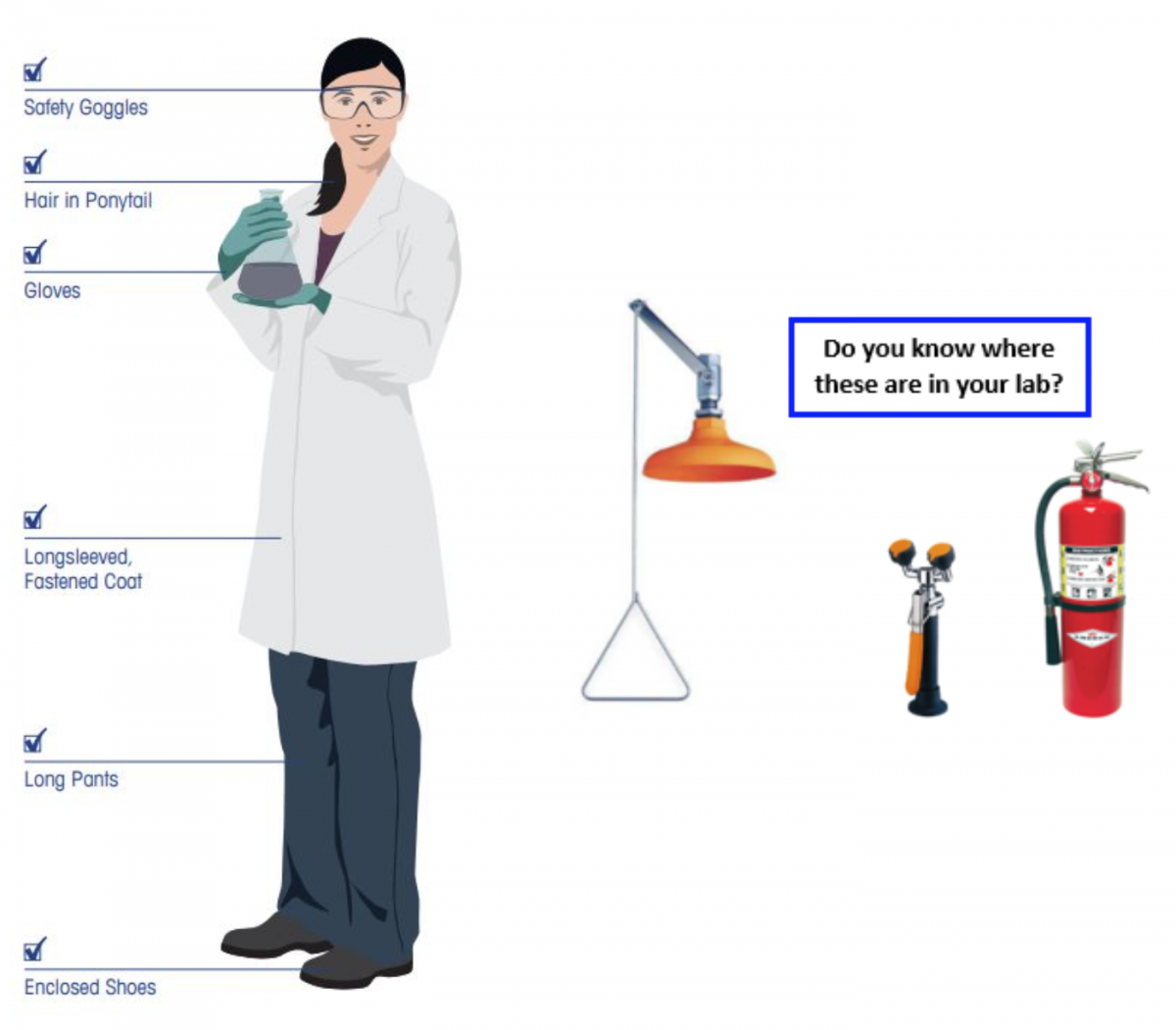Unforeseen laboratory accidents and incidents can occur as a result of working with different types of hazards associated with research activities. Over the last several years, high profile events at universities across the country have raised concerns about lab safety programs and efforts to mitigate hazards and risks.
In recent news, a student at the University of Utah was carrying a beaker containing a solution of sodium hydroxide across the lab and some of it splashed out and landed in the student’s eye. The chemical exposure caused severe burns to the student’s cornea. Click here to read the full story published in The Salt Lake Tribune.
How can this lesson learned help us strengthen the safety in our research laboratories?
It is important for all lab personnel to wear appropriate lab attire and their PPE – long pants, closed-toe shoes, lab coat, gloves, and safety glasses/goggles – when working in the lab. It is also important to know where your lab’s emergency safety equipment is located – take a minute now to recall where the nearest eyewash station, safety shower, and fire extinguisher are located. If you are working in a space that is new to you, always remember to look around the space and identify the location of the emergency safety equipment before beginning research activities.

Leave a Reply